- HOME
- QUALIFICATIONS
-
SERVICES
- General Home Inspection - Buyer
- Pre-Listing Home Inspection - Seller
- Radon Gas Testing
- Walk and Talk Consultation - Pre-Offer
- Swimming Pool Inspection
- New Construction Inspections
- Termite/ WDI Inspection
- Well Yield Testing
- Sewer Scope Inspection
- Camera Septic Evaluation
- Water Quality Testing
- Thermal Infrared Scan
- Baltimore County Rental Inspection - Licensed Rental Inspector
- Baltimore City Rental Inspections
- SERVICE AREA
- CONTACT US
- SAMPLE REPORT
- KNOWLEDGE BASE
- FAQs
- HOME
- QUALIFICATIONS
-
SERVICES
- General Home Inspection - Buyer
- Pre-Listing Home Inspection - Seller
- Radon Gas Testing
- Walk and Talk Consultation - Pre-Offer
- Swimming Pool Inspection
- New Construction Inspections
- Termite/ WDI Inspection
- Well Yield Testing
- Sewer Scope Inspection
- Camera Septic Evaluation
- Water Quality Testing
- Thermal Infrared Scan
- Baltimore County Rental Inspection - Licensed Rental Inspector
- Baltimore City Rental Inspections
- SERVICE AREA
- CONTACT US
- SAMPLE REPORT
- KNOWLEDGE BASE
- FAQs
|
Seller's Pre-Listing InspectionEventually, prospective buyers are going to conduct a home inspection. As a seller, you may as well know what they are going to find by getting there first. Having an inspection performed ahead of time helps in many other ways, such as:
12/20/2022 Private Water Well Information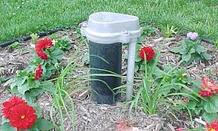 Well Inspection For information on private water well systems and well owner resources, visit Wellowner.org. Download a copy of the National Ground Water Association NGWA) Well Owners Guide. The Well Owners Guide is a comprehensive manual where you will find valuable information regarding proper well construction, routine well maintenance, water testing, and much more. Wellhead and Well Cap Check the wellhead (the part of the well that is above ground) and the well cap (the part that covers the wellhead) several times a year. Look at the wellhead casing and cap for any cracks or openings that should not be there. The cap keeps rainwater, pathogens, insects, and small animals from going into the well. If you find problems, contact a qualified water well service, well treatment, or well-drilling contractor. To find a qualified contractor in your area, visit Find Water Well Service Near Me - Water Well Contractor Directory - Wellowner.org. Well System Have a qualified water well service, well treatment, or well-drilling contractor inspect the well system every 10 years or as needed. The inspection will include the condition of the well, well pump, storage/ expansion tank, plumbing, and valves. When it is time for a new well, contact a qualified well-drilling contractor for installation and to properly abandon (plug or seal) the old well. Look around your well to see if items or materials are nearby that could impact your well. · Do not store, use, or dump harmful materials such as paint, fertilizer, pesticides, and motor oil near the wellhead. If you do use lawn fertilizer, follow the application instructions. Do not over apply near the wellhead. · Keep the top of your wellhead 8-12 inches above the ground. Slope the ground away from the wellhead to keep water from ponding near the wellhead. · Do not plant shrubs and trees near the well. · Be certain enough clearance around the wellhead for maintenance and/or for pump replacement. Never build a deck or porch over a wellhead. Buildings should be at least 3 feet from the wellhead. · Keep dog kennels or animal holding areas at least 50 feet from your well. · If your home has a septic system, it is important to maintain it. Poor maintenance can lead to contaminants finding their way into your drinking water. Routine Well Maintenance Regular maintenance is recommended for your well, including water testing and inspection. Having a maintenance routine will keep you informed of your drinking water quality and possibly identify problems. Water Quality TestingHomeowners are required to test their drinking water for coliform bacteria when a well is installed. Consider testing your drinking water if flooding has happened near your well, your well has had repairs, or you notice changes in your water’s taste, color, or odor. Homeowners should test: · Every year for coliform bacteria, E. coli, nitrate, and nitrite · Every three to five years for arsenic, copper, and lead · Check with your local health department to see if there are other times you need to test your drinking water. They may recommend other testing based on water conditions in the area. Well Performance The rate at which a well pumps groundwater (called well yield) can decrease over time for many reasons. Work with a registered well drilling contractor to find and correct the problem if there is a noticeable decrease in well yield. Possible reasons for a decrease in well yield could be: · Buildup of mineral deposits in a well · Buildup of microorganisms such as bacteria · Sand is being pulled into the well by the well pump · Well screen or casing corrosion · Parts of the well system not working correctly (pressure switch and pump failure) Water Treatment Water treatment could include disinfecting your well or installing a filtration system. Contact your local health department or a well service or treatment provider to discuss the best option before starting treatment. · If water treatment is needed, be sure to test the water for the contaminant of concern before and after treatment. This will tell you if the treatment is working correctly. · If disinfection is necessary, contact a qualified water well service, well treatment, or well-drilling contractor to properly disinfect the well. · Select a water filtration system certified by NSF International (NSF | The Public Health and Safety Organization) to reduce or remove the contaminants in your well. · Follow the recommended inspection and maintenance routine for your treatment system. Well Documentation All wells constructed in Maryland must be installed by a licensed well-drilling contractor. Once the well is constructed, the well driller must submit a well-completion report to the County health department. The report provides the details of the well construction (depth drilled, length of casing, screen installed, etc.) as well as a description of the sediment drilled through and well yield information. A copy of the well completion report can be obtained through the County health department by referencing the well tag numbers attached to the well casing. For more information, visit Information about your well (md.gov). To obtain a copy of your well completion report, visit Obtaining Your Well Records (md.gov) . 9/30/2022 Bathroom Exhaust Fans Why You Need a Bathroom Fan Bathroom exhaust fans improve air quality and comfort, and help protect your home from mold and moisture damage. The moist air produced from a bath or shower can accumulate on your bathroom surfaces. Without a proper ventilation system, you allow for rot and peeling paint and are providing an environment conducive to mold and mildew growth. A properly installed bathroom fan provides ventilation, drawing humid air and odors out of the home. Choosing Your Bathroom Fan You need to consider the size of your room to determine the cubic feet per minute (CFM) rating of the fan. The CFM rating measures the volume of air the fan moves. If you purchase a fan that is too small, it will not be effective in removing moisture from the air. For bathrooms up to 100 square feet in size, you need an exhaust fan that provide a minimum of 1 cubic foot per minute (CFM) per square foot of floor space. Industry experts recommend 60 to 80 CFM for small bathrooms and 200 to 300 CFM for larger bathrooms. When shopping for a bathroom fan, look for ENERGY STAR® ventilation options that help you design beyond code. Ceiling-mount bathroom connect to an exhaust duct that runs through the attic or between floors. Ceiling-mount fans are the most common. Wall-mount bathroom fans are designed for rooms where venting through the ceiling is not feasible. These fans typically vent directly through the wall to the exterior with little or no ductwork. Some fans will work in either a ceiling-mount or wall-mount installation. Venting Into The Attic You never want to vent your exhaust fan into the attic. Fans should exhaust directly to the exterior of the home. Take the time to ensure the bathroom exhaust vent is installed properly. This can be achieved by following building codes, providing the exhaust fan a path to the exterior through roof or exterior vent hood. Model ventilation, building, and mechanical codes require that vent fans exhaust tot he building exterior. Your attic is not a temperature-controlled environment, is never the same temperature as the living space, and is generally closer to the temperature outside. In colder weather, the warmer, moisture-laden, vented air will mix with the cooler attic air causing condensation to form. In the attic, excess moisture and heat can create the perfect condition for mold to grow. It can also cause wood rot that can destroy the structure of the home. For an example of roof vent installation, view the video below. How to Vent a Bath Fan Through the Roof | This Old House - YouTube 9/19/2022 Fall Maintenance Checklist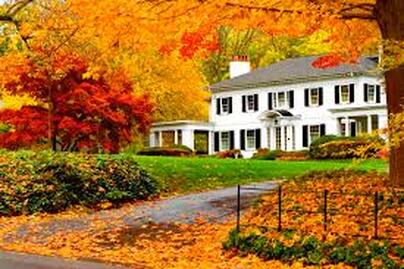 The transition from summer to fall is the perfect time to get your home ready for colder, wetter weather. The following essential tasks can save you from having to deal with much larger problems. 1. Inspect your roof for damage. Once the dripping starts, finding the source of the problem can be time-consuming. Stop problems this fall before ice and winter winds turn them from annoyances into disasters. Start by inspecting your roof from top to bottom, using binoculars if necessary. Check ridge shingles for cracks and wind damage. Look for damage to metal flashing in valleys and around vents and chimneys. Scan the entire roof for missing, curled, or damaged shingles. Look in your gutters for large accumulations of granules, a sign that your roof is losing its coating, which can portend larger problems. Finally, make sure your gutters are flowing freely. 2. Clean the gutters and downspouts. The roof drainage system diverts thousands of gallons of roof run-off water away from the foundation. It is vital to keep this system flowing smoothly. Clogged gutters can lead to damaged exterior surfaces and can result in water intrusion into the home. They are also more prone to rust and corrosion. Remember to clean the gutters and any clogs in the downspouts. Install mesh gutter screens and downspout extensions as needed. 3. Seal air leaks. A home with air leaks around windows and doors is like a coat left unbuttoned. Gaps in caulk and weatherstripping let cold air into your warm home. According to the U.S. Department of energy, sealing a drafty house can save up to 20% on your heating bills. Weather stripping and caulk can deteriorate over time. It is important to inspect them periodically. If you suspect a problem with your weatherstripping, look for daylight through the door or window. Try closing the door or window on a strip of paper. If the paper slides easily, your weatherstripping is not properly sealing the opening. 4. Winterize hose faucets and lawn irrigation systems to protect them from freezing temperatures. Take steps to ensure that outside faucets and in-ground irrigation systems do not freeze and burst. Close any shut-off valves serving outside faucets, then open the outside faucet to drain the line. There may be a barrel adjuster cap on the shut-off valve to facilitate this draining. If you do not have shut-off valves, and the hose faucets are not frost-proof, Styrofoam faucet covers can be used. Follow the manufacturer's procedure for winterizing and protecting lawn irrigation systems from winter damage, or hire a lawn irrigation system company to properly winterize the system. 5. Replace the HVAC filter. HVAC filters trap dust that would otherwise be distributed throughout the home. Clogged filters affect system efficiency, can make it difficult to keep your home at a comfortable temperature, and can result in increased utility costs. 6. Service the heating system before the heating season. It is a good idea to have your heating system inspected and serviced by an HVAC professional annually. To avoid the last-minute rush, consider scheduling this task in early fall before the heating season begins. 7. Have a certified chimney sweep inspect and clean any flues, chimneys, and fireplaces. All flues, chimneys, and fireplaces should be inspected by a certified chimney sweep annually. Fall is a great time to have this done before the heating season begins. A certified chimney sweep can provide a determination of interior condition and can ensure that flues, chimneys, and fireplaces function properly and safely. Call Stavlas Home Inspections at 410-428-5507 to schedule your next home inspection or schedule online at www.stavlasinspections.com. Schedule Now |
AuthorJohn G. Stavlas has been performing home inspections for over 5 years. ArchivesCategories |
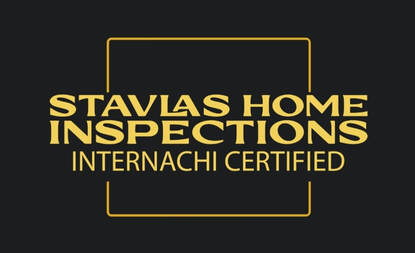

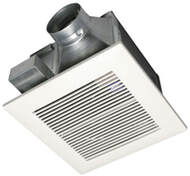

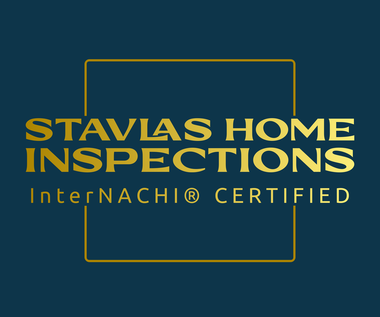
 RSS Feed
RSS Feed
12/29/2022
0 Comments